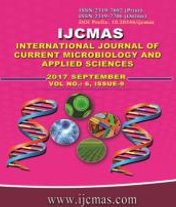


 National Academy of Agricultural Sciences (NAAS)
National Academy of Agricultural Sciences (NAAS)

|
PRINT ISSN : 2319-7692
Online ISSN : 2319-7706 Issues : 12 per year Publisher : Excellent Publishers Email : editorijcmas@gmail.com / submit@ijcmas.com Editor-in-chief: Dr.M.Prakash Index Copernicus ICV 2018: 95.39 NAAS RATING 2020: 5.38 |
The critical review of various study revealed that Public Private Partnerships offer potentially important opportunities for growth and development of developing countries (Spielman and Grebmer, 2004).Low public sector funding for agricultural sector and lack of incentives for the private sector to operate in areas where there is no market largely explain the yield gap in many food-importing developing countries. Yet, there are effective ways in which the public and the private sector could work together and jointly improve agricultural sustainability in poor countries i.e. PPP. It is risk sharing, cooperative, collaborative, contractual relationships with flexible ownership between two or more public and private sectors, typically of a long-term nature contributing for one or more functions like planning, resources and activities as required to accomplish a shared goal set out by the partners. It provides opportunities for information management, technological management, community mobilization, economic empowerment of farmers and women, reducing risk and uncertainty and fastens the implementation, reduces life cycle cost and optimizes risk of agricultural project. It allows the public sector to derive benefits from the efficiency and effectiveness of the private sector. It also have some limitations as agriculture suffers due to problems linked with supply of raw materials, mode of procurement and rate fixing and thereby affecting cooperation and coordination between the partners. This paper presented a stern review of all the aspect of Public Private Partnership in agriculture, its concept and meaning, different models, dimensions, impact and limitations.
 |
 |
 |
 |
 |